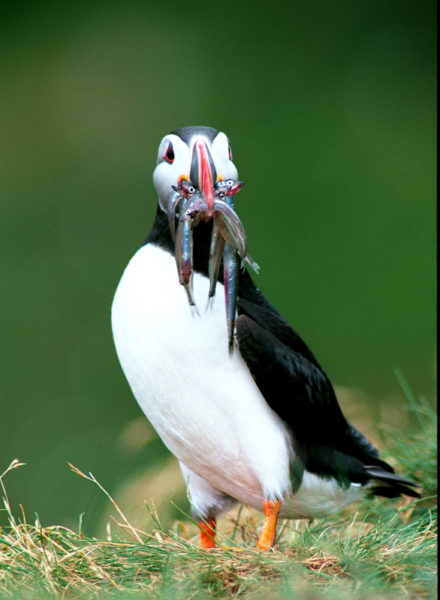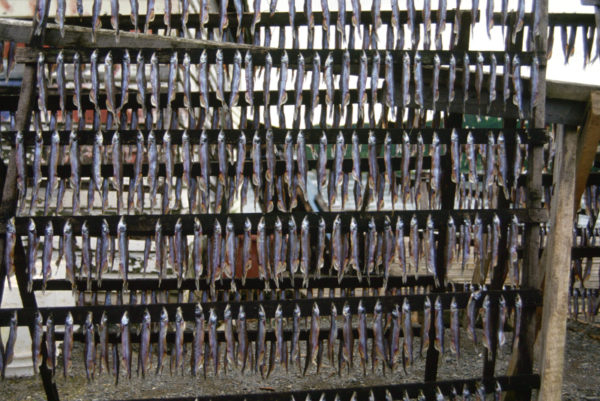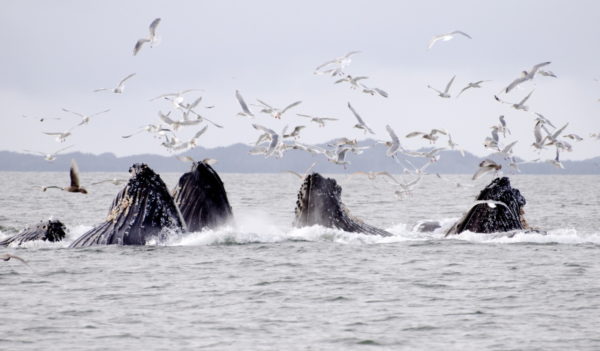Small fish are finally getting the attention they deserve
Sometimes the smallest things can have the biggest impact.
A few months ago, WWF-Canada released a report called Food For All, calling for a new assessment of Canadian fisheries for forage fish – small prey such as capelin, mackerel and herring. The report focused on the importance of these fish to predators like cod, seabirds and whales, and revealed that three forage fish fisheries in Atlantic Canada were in critical condition. We also discovered that many forage fish fisheries are being managed without adequate information.

The report was picked up by media across the country, sparking a big conversation about the tiny fish. The issue resonated: the collapse of forage fish stocks is bad news for predators who depend on them as a source of food. For some species, like minke and humpback whales, forage fish account for 75 per cent of their diet. To seabirds, such as gannets, forage fish are vital during chick-rearing season.
Many fisheries in Canada target forage fish, too, harvesting them for food — there’s a market for smoked or pickled herring, and for tiny capelin eggs on sushi — and bait. Atlantic mackerel are frequently used as lobster bait; it takes a kilo of mackerel to catch a kilo of lobster. For fully 75 per cent of these forage fish fisheries the stock status was unknown, meaning decisions have and are being made on how many fish can be caught without knowing how many fish there are.

In September, the Office of the Auditor General released a report on Sustaining Canada’s Major Fish Stocks, examining whether Fisheries and Oceans Canada is adequately managing Canada’s fisheries for conservation and sustainability. In all, 154 major fish stocks were considered, and nine were examined in detail, including capelin in the Gulf of St Lawrence. The findings were concerning. The report found a lack of rebuilding plans for depleted populations, a lack of surveys and no clear objectives or timelines for fisheries management.
Fisheries and Oceans Canada has committed to addressing these issues in 2016-17, including updating fisheries management plans and establishing indicators that will trigger a full stock assessment earlier than scheduled if it looks like stocks are in trouble.

These are very positive steps. WWF-Canada is currently working to address information gaps about one forage fish: capelin. This week, we launch a new venture, the Atlantic Capelin Monitoring Network, a collaborative forum bringing capelin science, management and conservation communities together with experts from Fisheries and Oceans Canada, academic institutions and non-governmental organizations. Pooling our resources and information will uncover new ways to support this vital fish.
Food For All began the conversation. But we’re just getting started. In addition to supporting scientific efforts to improve management of fisheries like capelin and Atlantic mackerel, we’re working on securing protections for critical habitat like spawning beaches and finding alternatives to using forage fish as bait in commercial fisheries like lobster.
Looking out for the little guys has turned into a big project for us.
We hope you will consider becoming a supporter of this work and other projects that create solutions for species and healthy ecosystems by choosing the BMO® WWF-Canada MasterCard® credit card. Every time you make a purchase with this card, a percentage of the dollar value of the transaction goes directly to WWF-Canada. Find out more here.

